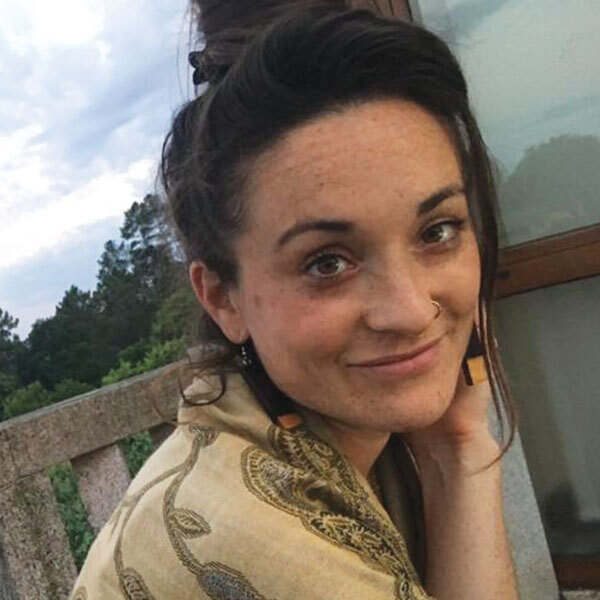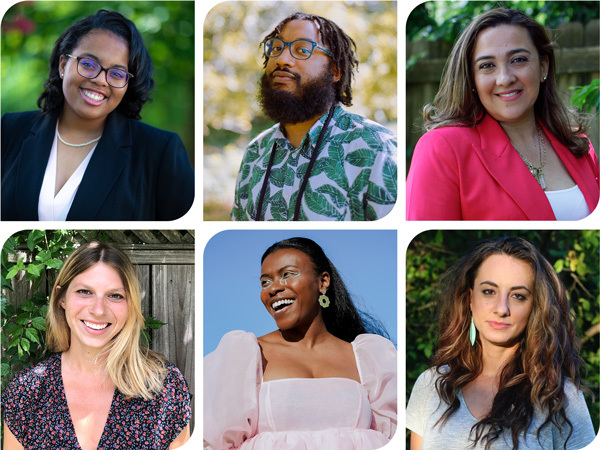Changing journalism in the South
Much as we value biodiversity in the natural world, a thriving media system is incredibly important to protecting our environment. Yet evidence shows we are facing a media extinction event on a national scale as local news outlets disappear at an unprecedented rate, leaving thousands of Southern communities stranded without reliable news sources. As newspapers shrink and newer outlets fail to fill the gap, we are left without dependable reporting on the climate and environmental issues that matter most to communities across our region.
But where some see cause for despair, other storytellers see a calling to step into the breach.

This season on our award-winning podcast Broken Ground, we’re handing the mic to trailblazing journalists and creators rethinking how we share environmental news in the South.
“When you look at the people and places being left behind as local news outlets disappear, it’s so often the same communities targeted by heavily polluting industries,” said Leanna First-Arai, host of Broken Ground podcast. “This season each of our guests, from a publisher of bilingual news to a photographer focused on environmental justice issues, is reimagining how we deliver news to, and with, communities to raise awareness and build power around important environmental problems.”
What is a news desert?
The spread of news deserts has been fueled by changing technology and business models. As the internet made information more readily accessible, it undermined the ad-driven model funding most publications. As revenues dropped, papers got thinner, news rooms lost staff and eventually outlets were forced to close. Since 2005, roughly 2,200 local newspapers have folded across the country and the number of active reporters and journalists covering news has dropped by more than half, according to research from Penny Abernathy, a visiting professor at Northwestern who was previously at the University of North Carolina’s Hussman School of Journalism.
Communities with significantly reduced or totally without access to any kind of newspaper or public news outlet are referred to as “news deserts.” In other words, communities are left without access to comprehensive reporting on local issues. This phenomenon disproportionately affects rural areas, low-wealth communities and communities of color.
For some Southern context, of Georgia’s 159 counties, 112 have just one local newspaper, and 17 have no local news source at all — that puts roughly 81 percent of the state in a news desert, according to a 2020 report compiled by University of North Carolina’s Hussman School of Journalism and Media. In fact, the Southeastern U.S. has more news deserts than any other region in the country.
When you look at the places being left out as local news outlets disappear, it’s so often the same communities that dirty industries target to dump pollution.
Leanna First-Arai, Broken Ground host
How are Southern storytellers reinventing local news?
New voices are rising up to reshape the media landscape in the South, seeing the vacuum left by local news as a chance to empower communities to tell their own stories and lift up the voices of those traditional media often leave behind.

This season of Broken Ground follows the journey of six Southern storytellers covering the climate and environmental issues that matter most to the communities across our region. You’ll hear how Lyndsey Gilpin and Tajah McQueen of Southerly equipped local residents with reporter skills through a community fellowship and how freelance writer Cameron Oglesby celebrates the stories of thriving Southern communities. Cornell Watson talks about the power of photography to tell a story and to bear witness in the South’s quieter corners, places where bad actors often head in an effort to avoid prying eyes, while Victoria Bouloubasis and Paola Jaramillo invite listeners behind the scenes of their work to reach North Carolina’s growing Latino population through EnLace Latino NC.
What happens when local news outlets disappear?
These journalists are stepping in where traditional news outlets have disappeared. As publications’ resources shrink, environmental stories are often the first to get cut in favor of more sensationalized headlines that attract a larger audience. The information gap can leave small communities exposed and uninformed.
“People are left to their own assumptions about what’s happening and that leaves a big space for industry, whether it’s fossil fuels, utilities, agriculture, to fill that gap by sending press releases and information and, oftentimes, disinformation,” noted Lyndsey Gilpin, editor of Southerly. “If you want to reach rural, low-income communities, then you need to go to them, which means sometimes printing off a brochure, or partnering with local organizations rather than waiting on bigger, fancier, legacy places to do the work, you just have to go directly to the source and do it with them.”
Why is local news important for environmental issues?
Smaller communities, especially in the South, are most often the targets of environmental injustice and these development tend to play out on the ground, in places unlikely to attract media interest. Take the now-cancelled Atlantic Coast Pipeline, for instance, which took years and major legal showdowns before it gained attention outside the region. Reporter and editor Lyndsey Gilpin tracked the path of the pipeline and overlaid it with a map of news deserts. Unsurprisingly, “in about half of the 25 counties along the Atlantic Coast Pipeline route, print news comprised a single weekly paper and several weekly or daily papers cover more than one county.” This lack of comprehensive coverage gives developers an advantage, letting projects get going before people nearby even know they’re in the works.
On the flip side, there’s also ample evidence of the power of thorough and transparent reporting to affect major change. Season 5 of Broken Ground provides a perfect example: Local action by the residents of a small Black community in southwest Memphis defeated a major crude oil pipeline. This feat that depended on powerful local journalism from people like Carrington Tatum, then writing for MLK50, getting accurate information to the affected communities.
“When environmental information is stifled, harm happens. Connecting to the stories of our neighbors and fellow Southerners facing environmental issues is a powerful force for action,” said SELC Director of Communications Erin Malec.
Listen to all the seasons of Broken Ground at BrokenGroundPodcast.org on Apple Podcasts, Spotify, or wherever you listen to podcasts.
